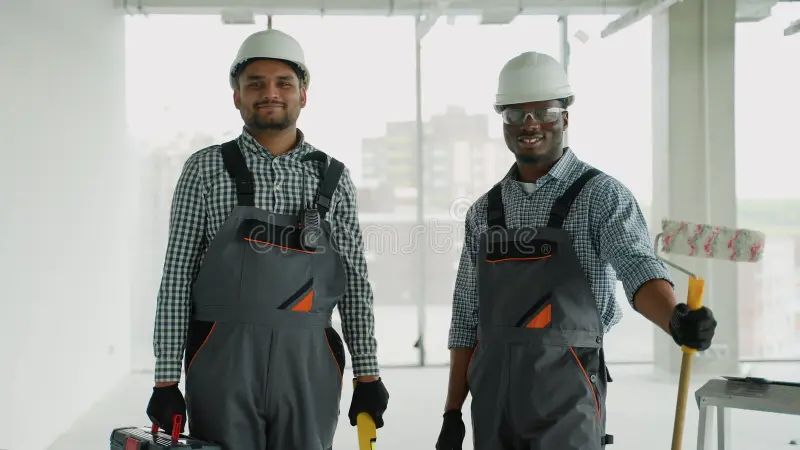Rules of Roof Maintenance
Hannah Darling • June 9, 2021
Broken shingles are a sign that your roof needs attention. Pay attention to this early sign and you'll save yourself time and money in the long run.

Make a list
Lists are great ways to stay on track. Write down some big things you want to accomplish and some smaller things, too.
Check the list regularly
Don’t forget to check in and see how you’re doing. Just because you don’t achieve the big goals right away doesn’t mean you’re not making progress.
Reward yourself
When you succeed in achieving a goal, be it a big one or a small one, make sure to pat yourself on the back.
Think positively
Positive thinking is a major factor in success. So instead of mulling over things that didn’t go quite right, remind yourself of things that did.

By Christian Hicks
•
February 12, 2025
Employee turnover in the construction industry is staggering. According to the U.S. Bureau of Labor Statistics , the annual turnover rate in construction hovers around 57% —one of the highest across all industries. If a company were a bar, it would be giving away free drinks for the number of people walking out the door. So why do workers leave? Better pay elsewhere (sometimes, but not always) Unclear career paths ("Is there a promotion after foreman, or do I just get a better parking spot?") Lack of training and development Burnout and safety concerns Retention Strategies That Work Build Career Ladders, Not Just Ladders Most workers don’t want to stay in the same role forever. Companies that map out clear career progression—apprentice → journeyman → foreman → superintendent → project manager—see far less turnover. Invest in Training and Upskilling A 2023 Associated Builders and Contractors report found that for every $1 invested in training, companies saw a $3 return in productivity and retention. Give workers opportunities to grow, and they’ll stay loyal. Create a Culture of Safety and Well-being Unsafe workplaces lead to high turnover. According to the National Safety Council , the cost of work-related injuries in construction exceeds $11.5 billion per year . A strong safety culture doesn’t just save lives—it saves businesses. Retaining employees takes more than hard hats and lunch breaks. Targeted HR Consulting can help you develop career pathing programs, training strategies, and retention plans that keep your best workers on site. Contact us today!

By Christian Hicks
•
February 12, 2025
Construction is tough. It’s physically demanding, high-pressure, and often dangerous. But while hard hats and steel-toed boots protect workers from physical hazards, there’s little protection against mental health struggles. The numbers don’t lie: The construction industry has the highest suicide rate of any profession. The CDC reports that construction workers are four times more likely to die by suicide than the general population. Workplace stress is rampant. A 2023 study by the Construction Industry Alliance for Suicide Prevention (CIASP) found that 83% of construction workers experience stress that affects their work and well-being. Substance abuse is a crisis. According to the National Safety Council , 15% of construction workers struggle with substance use disorders, double the national average. So why is mental health still a taboo topic on most job sites? Breaking the Stigma There’s an old-school mentality in construction that says: “Tough it out. Suck it up. Get back to work.” But this culture is costing lives. Many workers fear that admitting mental health struggles will make them look weak or jeopardize their jobs. Steps Construction Companies Can Take Make Mental Health a Leadership Priority Mental health initiatives can’t just be an afterthought. When leadership openly discusses well-being, employees feel safer seeking help. Provide Anonymous Resources Many workers don’t want to talk about their struggles face-to-face. Offering confidential Employee Assistance Programs (EAPs) can provide critical support without fear of judgment. Train Managers to Spot Warning Signs Supervisors should be trained to recognize signs of distress—like withdrawal, mood swings, or increased absenteeism—and know how to offer support. Create Peer Support Networks Some of the most effective mental health programs come from within. Peer-to-peer mentoring, where workers support each other, has been shown to increase engagement and reduce stigma. Rethink Time-Off Policies Many construction workers avoid taking time off for mental health because they fear losing wages. Flexible leave policies and wellness days can make a difference. Real-World Success Stories Some companies are leading the charge in tackling mental health in construction: Turner Construction launched a company-wide initiative to make mental health part of safety meetings. Skanska implemented a 24/7 mental health helpline for employees and their families. Sundt Construction created a "buddy system" to ensure workers always have someone to talk to. Mental health is just as important as physical safety. If you want to build a culture where workers thrive, Targeted HR Consulting can help you integrate mental health resources into your HR strategy. Contact us today to start making mental well-being a priority in your company.
